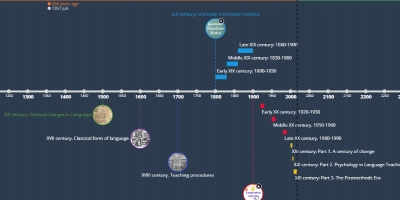XXI century: Part 1. A century of change (jan 1, 2000 – nov 1, 2004)
Description:
Many contemporary authors, implicitly or explicitly, do not hold the Grammar-Translation Method in great esteem. This is due to the nature of this method, focused on grammatical rules, memorization of vocabulary and of various declensions and conjugations, translation of texts and written exercises. The only exceptions who openly separate Ollendorff from the traditional GrammarTranslation trend are:-Sánchez (1997) and,
-Howatt (2004).
The latter specifically highlights that “The really bad grammar-translation coursebooks were not those written by well-known names such as Ahn and Ollendorff” (Howatt 2004: 156). Ollendorff’s materials were driven by the gradation from simple to complex so as to make the grammar accessible enough for the learners. Moreover, he placed extraordinary emphasis on oral practice. In this respect, the presentation of the input was accomplished through the question-and-answer technique.
The most traditional foreign language teaching sequencing is the so called P-P-P model:
-Presentation (P1)
–Practice (P2)
–Production (P3).
It correlates with the psychological sequence of processes that leads to the acquisition of cognitive skills. This is described by Anderson (2000) in his “Theory of Production Systems”.
Added to timeline:
Date:
jan 1, 2000
nov 1, 2004
~ 4 years and 10 months
